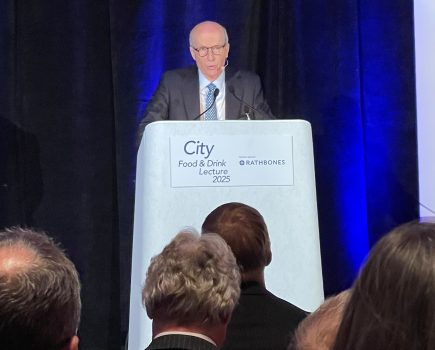Harvest is home, courtesy of a break in the unseasonally wet weather throughout July and early August. While it’s a relief to see it all in the shed, it was not before some of the wheat had chitted in the ear, so putting my milling premiums in jeopardy.
Yes, another weird weather event impacted my crops during the strange growing season just ended. The harvest I’ve just gathered with my trusty John Deere combine (38 years old and still going strong, despite the odd red warning light) was actually quite respectable in terms of yield, but a successful harvest these days feels more like a triumph against the elements than a planned event.
Looking back to the beginning of the growing season last September, things started very dry, which encouraged me to hold off sowing my heavier land to cereals to try to reduce blackgrass germination. But no sooner did I sow it into perfect conditions in late October than the heavens opened. A neighbour recorded 17 inches or rain in not much more than 17 days.
The rain was so intense that it put the top of the soil profile into suspension, which settled out to create a ‘capped’ effect. This was an unfriendly environment for seedlings trying to emerge through the floods. Remarkably, bar a few of the wettest places in the field, most survived and grew away surprisingly well throughout yet another weirdly mild winter.
Not only was it mild but it then turned dry in the late winter and early spring, only for flooding to return in March. Things then dried out to an extreme extent once more in May and June (one of the hottest on record), stunting the growth of my spring crops before wet weather returned for July (another record in some counties) and early August.
Given these increasingly difficult weather patterns, my instinct is to sow everything in the autumn so crops at least have time to recover from weather extremes. But as the chemistry we are allowed to use to control insect and grass weed pests in our crops has become ever more restricted, so spring sowing some crops has become more and more essential.
With climate change (a better description than ‘global warming’ given the cool August we’ve just experienced) becoming ever more extreme, just what will be the most successful way to achieve reliable crop yields?
The UN says our planet is now headed for ‘global boiling’, and the southern half of Portugal is forecast to become hotter than the Sahara desert is now, with daytime highs of 55 degrees Celsius becoming the norm in summer months as soon as 2050.
I have every confidence that I will still be driving my trusty John Deere combine in 2050 and, no doubt, still moaning loud and long about the weather. But, by then, I imagine I’ll be cutting crops of millet and sorghum rather than wheat and barley.
For more like this, sign up for the FREE South East Farmer e-newsletter here and receive all the latest farming news, reviews and insight straight to your inbox.







